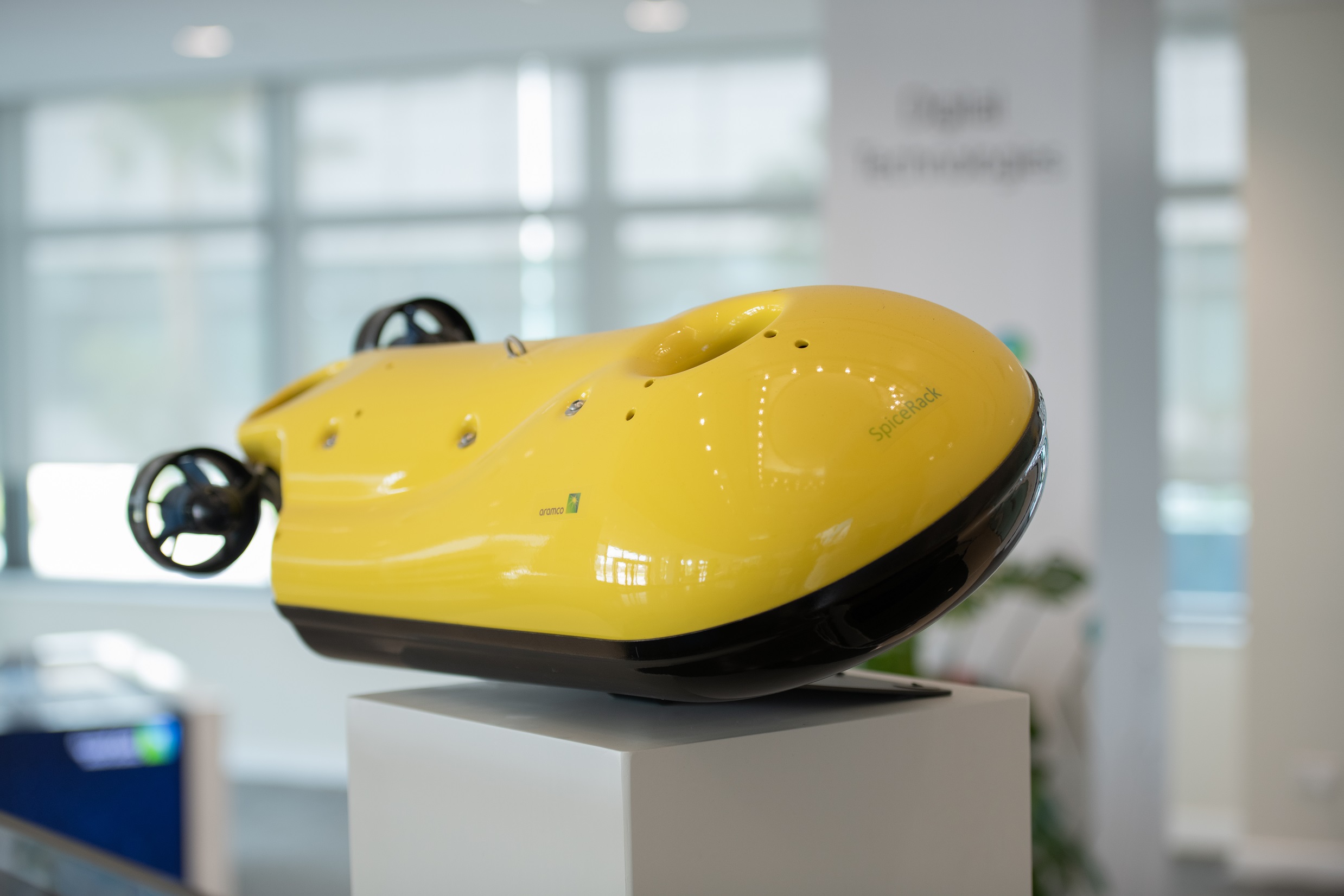When sharks acquired a taste for chewing on subsea data cables in the Red Sea, it presented a problem for geophysicists looking to collect seismic data.
Such cables are used to explore what lies beneath the sea floor to yield indicators of potential oil and gas reserves.
The cables generate electromagnetic fields which sharks can mistake for prey. So, Aramco engineers set about finding a new way of harnessing subsea seismic data while sparing the sharks from their unintended lunch.
The result was SpiceRack – a robotized solution to gather seabed seismic data. It has since been joined by a slew of other robots, drones and automated vehicles that are accelerating digital transformation across Aramco’s operational ecosystem.
Some of these were showcased at the Automa 2023 event in Vienna, Austria, where Mohamed A. Elreheem, the engineering technology head at Aramco Europe, outlined the impressive role of robotics from exploration to decarbonization.
He said: “Our aim is to accelerate the deployment of robotics throughout our business, enhancing our operations, ensuring the safety of our employees and delivering more sustainable energy to the world.
“These new technologies will provide safer, more cost-effective and efficient inspection capabilities, emergency response, aerial mapping, project monitoring and security surveillance.”
Reliability and Responsibility
Drones, autonomous underwater vehicles and ground crawlers are among the robotics fleet at Aramco. They help to extend the reach of operators and give the opportunity to inspect assets from a great height in the case of drones or from the ocean depths in the case of SpiceRack.
Meanwhile ground crawlers can survey the interior and exterior of pipes and tanks to inspect for corrosion, residue formation or structural deterioration as well as being able to function in unmanned facilities.
The deployment of such robotics not only supports operations at the field level but also helps Aramco to deliver products to customers reliably and responsibly.
The Oil Supply Planning and Scheduling Department, better known by its abbreviated name OSPAS, is Aramco’s nerve center. It relies on digital technologies to oversee production scheduling, supply optimization and manage field operations.
More than 60,000 remote terminal units collect data in real time from company facilities with robotics providing an increasingly pivotal role in that data acquisition.
Back on the seabed, SpiceRack continues to capture crucial data for Aramco by autonomously traversing vast areas and conducting surveys in half the time it takes using conventional methods.
The sharks, meanwhile, can focus on chewing other things.




